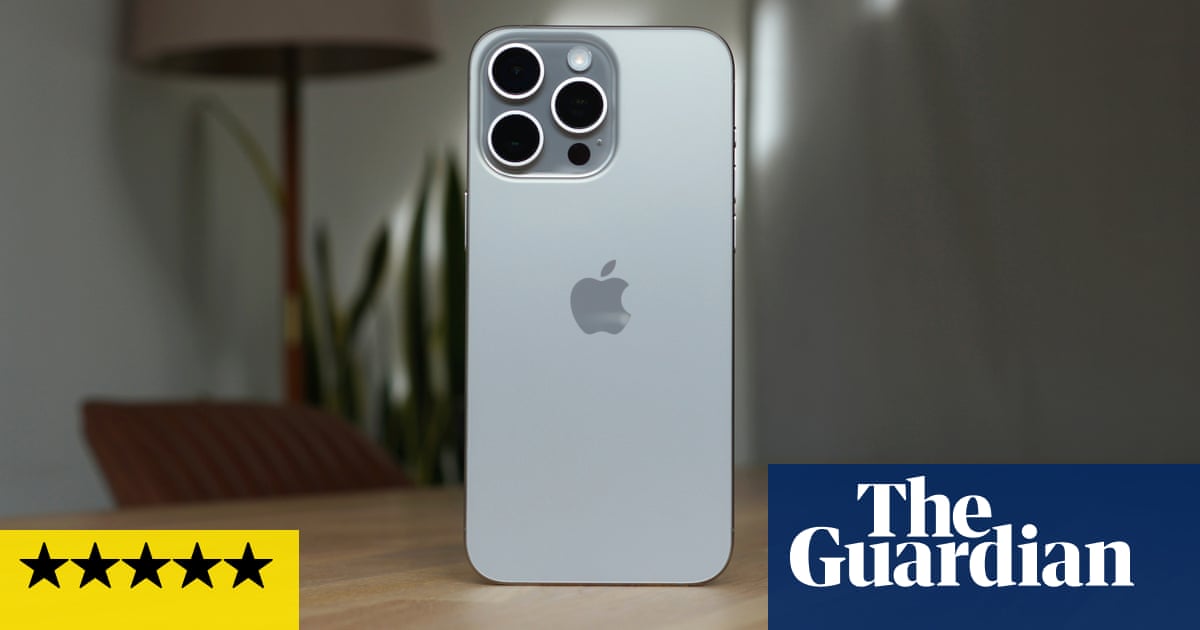
OnePlus is back for 2020 with a revamped, lower-cost flagship phone with a slightly smaller 90Hz screen and 5G as standard.
The £599 OnePlus 8 slides in under the £799 8 Pro, offering most of what you get on the firm’s top phone but in a smaller, more manageable package.
On the outside the OnePlus 8 looks like 2019’s 7T Pro hit with a shrink ray and given a new paint job. Not that the phone is that small. It has a gorgeous 6.55in FHD+ AMOLED screen that is big by most standards, it is just not as massive as the super-sized variety. It runs at a 90Hz refresh rate too, which continues to be an excellent enhancement making all scrolling and animations a lot smoother than the previous 60Hz standard.
A selfie camera peers through a hole in the screen in the top left corner. The rest of the device is the usual metal and glass sandwich with curved sides. It has a central triple-camera lump in the back, OnePlus’s excellent alert slider, power and volume buttons in the sides, and a USB-C port in the bottom, but no headphone socket.
At 72.9mm wide the OnePlus 8 is one of the narrowest large-screen smartphones available, which with its relatively light 180g weight, makes it significantly easier to handle. For comparison, the OnePlus 7T is 1.5mm wider, Google’s Pixel 4XL is 2.2mm wider, Samsung’s Galaxy S20+ is 0.8mm wider and Apple’s iPhone 11 Pro Max is 4.9mm wider.
At 160.2mm long and 8mm thick the OnePlus will fit in a pocket fairly easily. A good clear plastic case is included in the box, while a screen protector comes pre-applied.
Specifications
Screen: 6.55in 90Hz FHD+ AMOLED (402ppi)
Processor: Qualcomm Snapdragon 865
RAM: 8 or 12GB of RAM
Storage: 128 or 256GB (UFS 3.0)
Operating system: OxygenOS 10.5 based on Android 10
Camera: triple rear camera 48MP, 16MP ultra-wide angle, 2MP macro, 16MP front-facing camera
Connectivity: 5G, dual sim, wifi 6, NFC, Bluetooth 5.1 and GPS
Water resistance: no official rating
Dimensions: 160.2 x 72.9 x 8 mm
Weight: 180g
Speed and battery life
The OnePlus 8 and 8 Pro are some of the first smartphones released in Europe to feature Qualcomm’s latest Snapdragon 865 processor, available with 8 or 12GB of RAM depending on storage version. It is 5G-capable by default and supports two sim cards at once.
Performance all-round was nothing short of fantastic. OnePlus has made a name for itself with some of the fastest-feeling smartphones, and the 8 is no exception. Snappy, fluid, with no hint of lag or latency. It’s simply more responsive than anything else. Gaming performance was top notch too.
Top performance is backed by solid battery life. The OnePlus 8 lasts more than 32 hours between charges, which is longer than its predecessor, making it from 7am on day one until 3pm on day two - enough for even the busiest of days.
That was after spending three hours on 4G, the rest on wifi. And with the screen set to 90Hz and on for well over five hours for the usual deluge of email, messages and push notifications, 50 minutes of video, plus seven hours of Spotify via Bluetooth headphones and about 20 photos.
One caveat: it was impossible to test the effects of 5G on battery life during lockdown in the UK as I do not currently receive coverage at home. 5G performance on Vodafone and EE, however, was similar to the Samsung Galaxy S20 Ultra when tested during a grocery run. It’s worth noting that, pending a software update, the phone is limited to 4G-only when two sims are used at the same time.
Warp Charge 30T super-fast wired charging returns for the OnePlus 8, reaching 50% in 25 minutes and a full charge in 65 minutes. New for this year is optimised charging, which is designed to preserve battery longevity by learning when you need a fully charged phone overnight and delays charging to 100% until just before that moment. It works with any charger not just the one included in the box.
Sustainability
OnePlus rates the battery in the 8 for 800 full-charge cycles till 80% capacity - better than the typical 500. Battery longevity is also aided by the optimised charging system. The battery can be replaced and the smartphone is generally repairable by OnePlus in the UK.
The firm offers a trade-in programme for both its own phones and models from rivals. It did not comment on the use of recycled materials in its smartphones.
OxygenOS 10.5
The 8 ships with OxygenOS 10.5 based on Android 10, which continues to be one of the best implementations of Android available on any device.
New for this year is the addition of Google’s Discover feed on the home screen, replacing the less-than-loved “Shelf” alternative. Other nice touches include the ability to choose which icons show in the status bar, full theme support, including a dark-mode theme, choices for animations such as that around the fingerprint scanner and the ability to trigger Google Assistant by pressing and holding the power button.
Overall OxygenOS continues to provide plenty of customisation and power-user features without clutter or slowdown.
OnePlus offers software support for at least three years from release, including two years of Android version updates and then a further year of security updates on a bi-monthly schedule. Updates to new versions of Android are fairly fast post-release by Google too.
Camera
The OnePlus 8 has a triple-camera system on the rear of the device, combining a 48-megapixel main camera, a 16-megapixel ultrawide camera and a 5-megapixel macro camera.
The main 48MP camera shoots 12MP photos by default, producing some great-looking images in good lighting, while the auto-HDR mode handles high-contrast scenes well. It stumbles a bit in middling conditions, such indoor lighting, losing detail in textures and struggling with white balance. Low-light performance is not fantastic, although OnePlus’s Nightscape mode helps. A 48MP mode is also available, but I generally got better results without it.
There’s no telephoto camera, which is a shame, instead a 2x zoom button in the camera app is a digital zoom, which works pretty well at low magnifications, but is full of artefacts anywhere approaching its 10x max.
The 16MP ultrawide angle camera is fun and does a good job of capturing a wide scene, but was a little bleached and soft on detail in bright light, handling better in less sunny scenes and indoors during the day.
The 5MP macro camera is garbage. I take quite a lot of macro photography and got much better results using the main camera, which can focus fairly close to the lens, and then zooming in a little bit.
The front-facing 16MP camera is fixed-focus but is really good, producing highly detailed and well toned skin in images in good light. It gets slightly softer in poor light, but still very respectable.
Observations
The stereo speakers are surprisingly good
Call quality was excellent on both sides of the call
OnePlus 8 models sold in the US on contract have the IP68 water resistance rating, but the rest have just “everyday water resistance”
The haptic feedback and vibration motor is sharp and punchy, but can be heard as clearly as a low-level alert tone
Price
The OnePlus 8 costs £599 with 8GB of RAM and 128GB of storage in black or £699 with 12GB and 256GB in green, shipping in the UK on 21 April. Other colours are available in other regions.
For comparison, the previous OnePlus 7T cost £549, OnePlus 8 Pro costs £799, the Samsung Galaxy S20 costs £899, and the Apple iPhone 11 costs £729.
Verdict
The OnePlus 8 is a great phone at a good price, particularly when you consider you’re getting 5G flagship performance at £599, which undercuts rivals such as Samsung’s Galaxy S20 by about £300.
You get a smartphone experience that’s second to none. Always fast, always fluid and with a level of software refinement few others manage. The 6.55in 90Hz screen is bright and slick, while the narrow width and relatively light weight make the OnePlus 8 one of the easiest big-screen phones to use on a day-to-day basis.
The battery outlasts even the most intense days, while it charges super fast and has modes to help increase battery longevity. The main camera is good for the money too.
Corners have been cut to reach the mid-range price, including a telephoto camera and wireless charging. While three years of software support might be fairly standard for Android devices, Samsung offers four and Apple offers at least five, so there’s still work to be done.
Overall the OnePlus 8 offers a lot of phone for the money in a manageable size, making it the very best lower-cost 5G device released so far.
Pros: great screen, top performance, good battery life, super-fast charging, good camera, great software, alert slider, top-notch build, 5G, dual-sim, superfast in-screen fingerprint scanner
Cons: no headphone socket, no telephoto camera, 5G disabled when using two sims, no formal IP rating, only three years software updates
Other reviews
iPhone 11 review: an iPhone XR with a better camera
OnePlus 7T review: the new cut-price flagship king
Samsung Galaxy S20 Ultra review: the superphone that’s a little too massive
Fairphone 3 review: the most ethical and repairable phone you can buy
This article contains affiliate links, which means we may earn a small commission if a reader clicks through and makes a purchase. All our journalism is independent and is in no way influenced by any advertiser or commercial initiative. By clicking on an affiliate link, you accept that third-party cookies will be set. More information.












